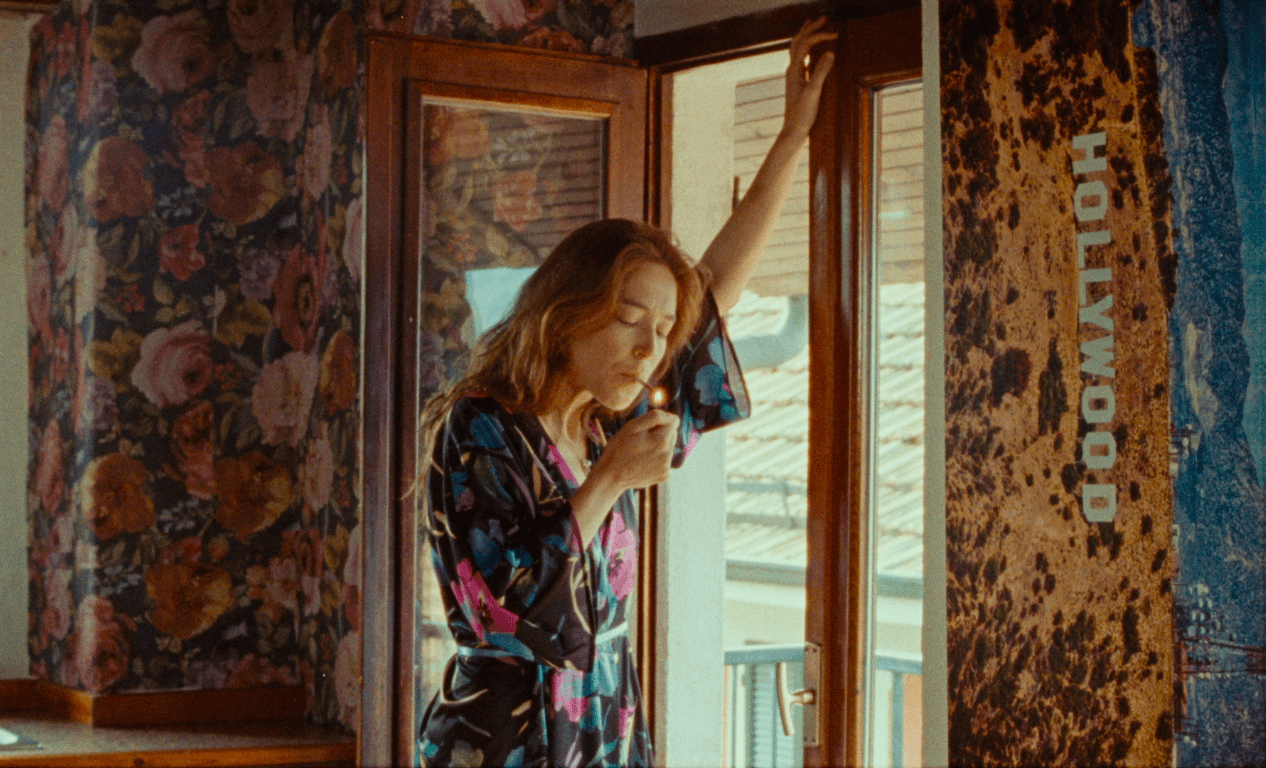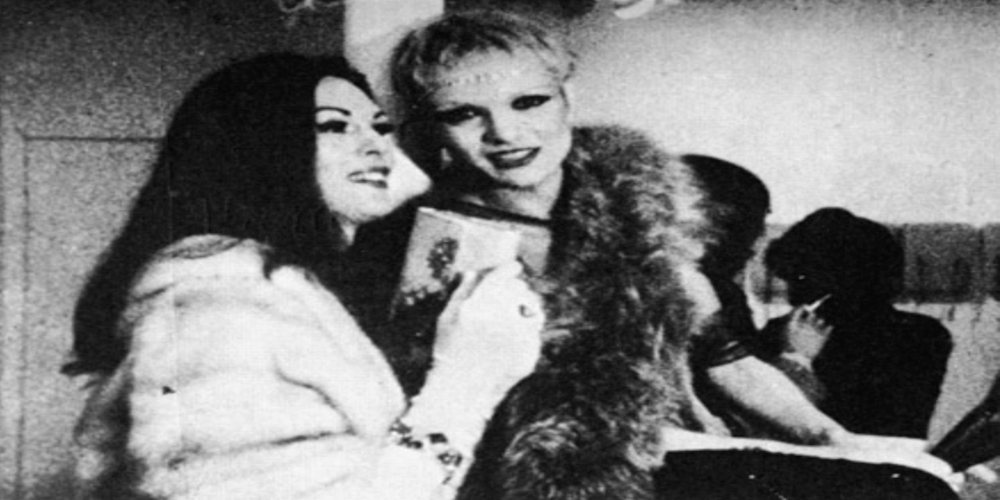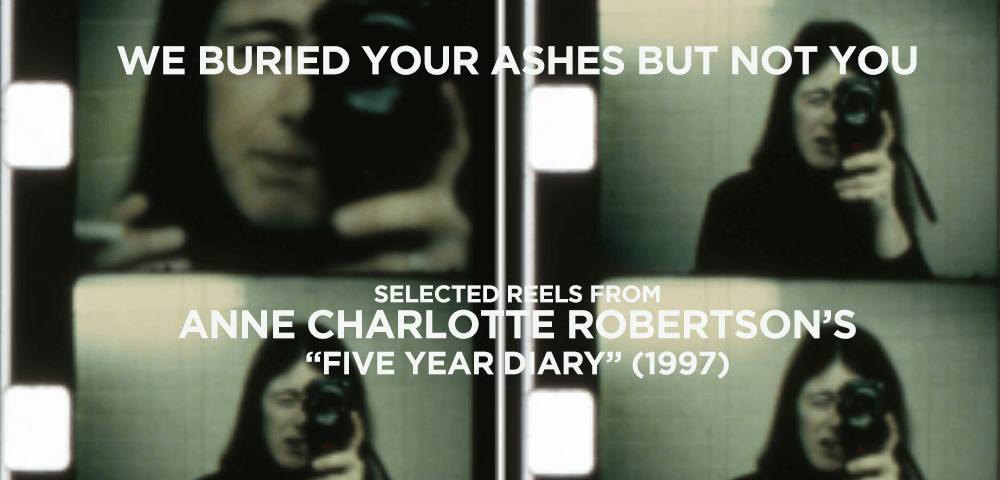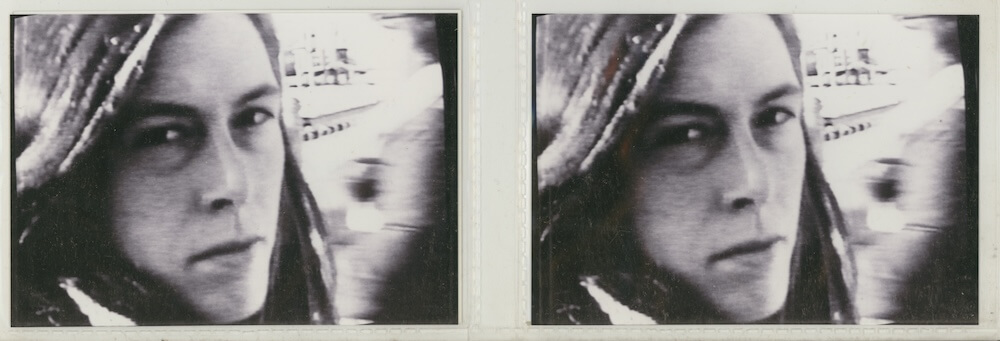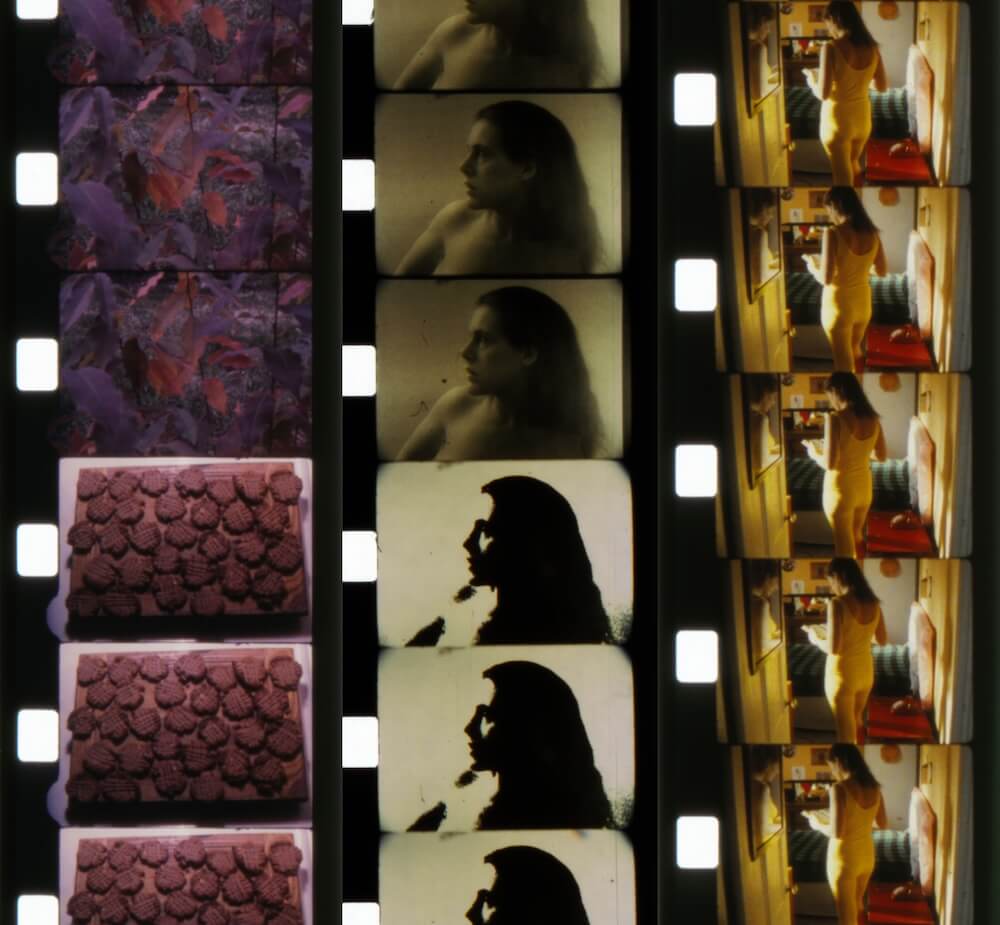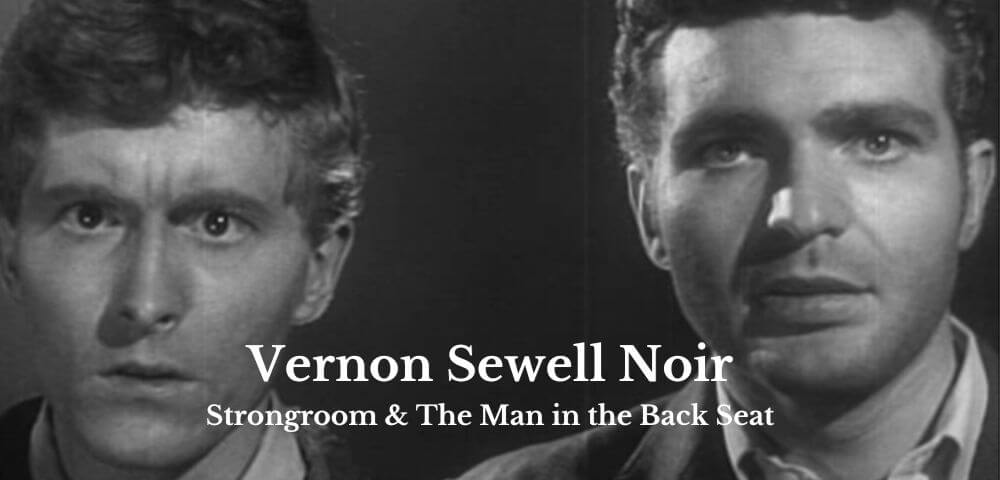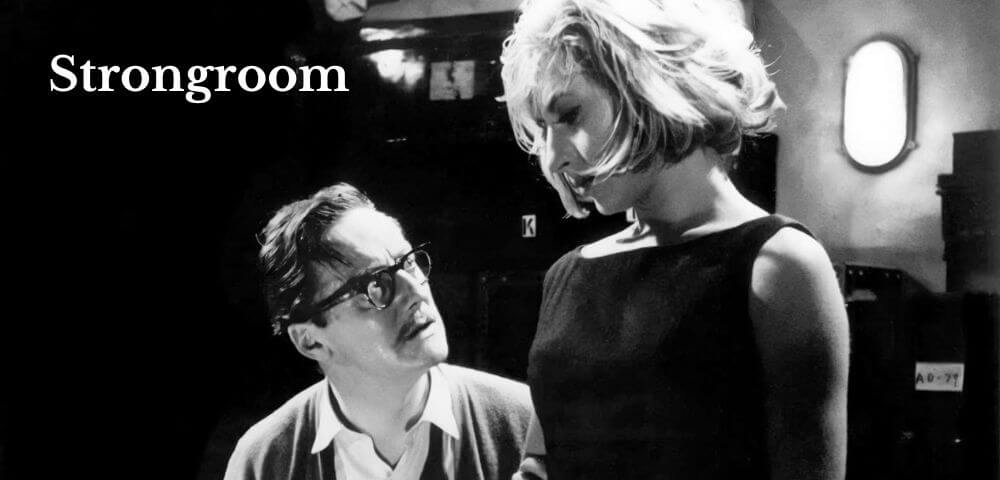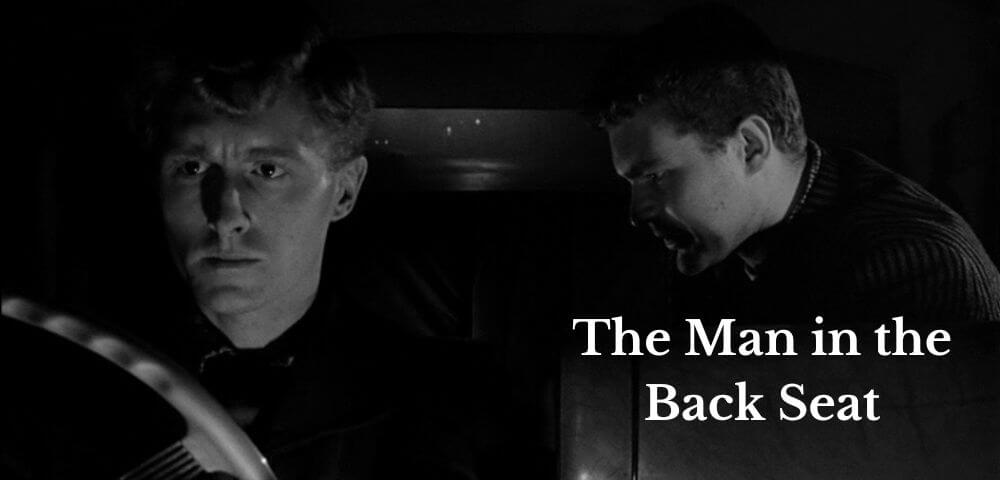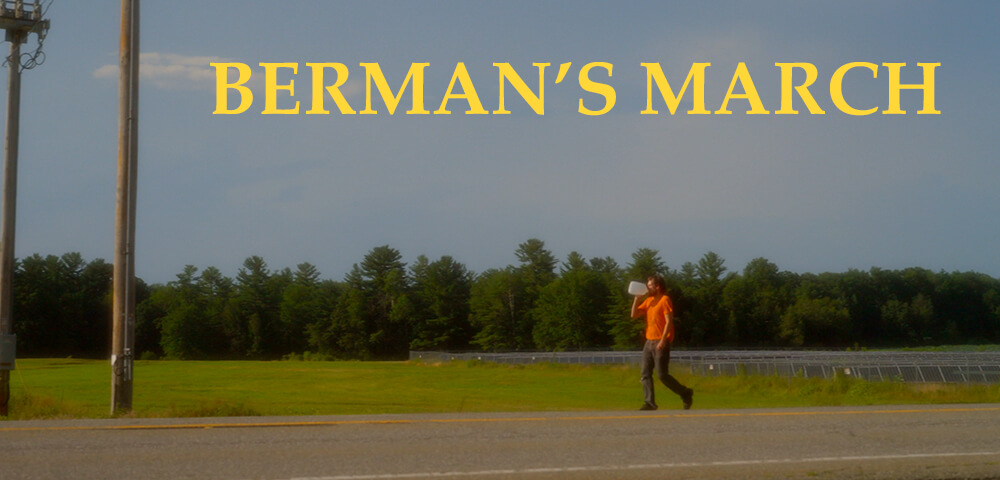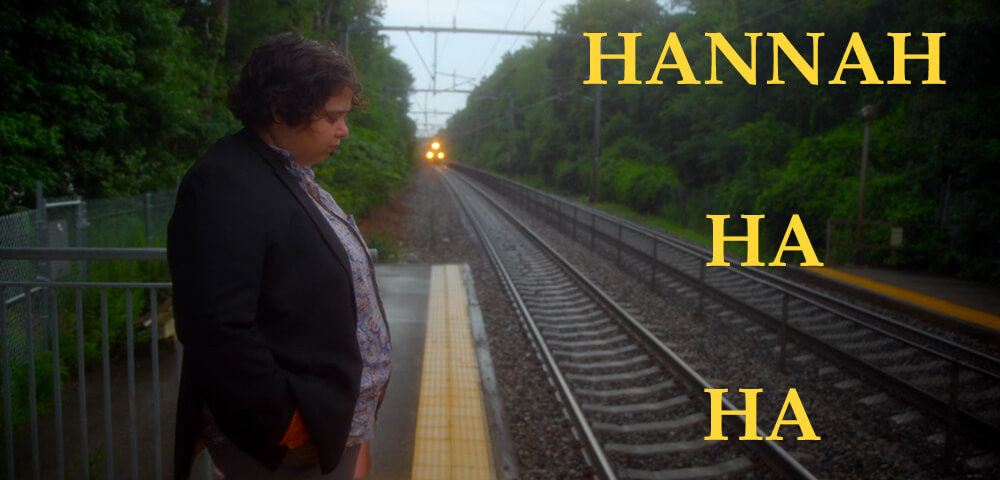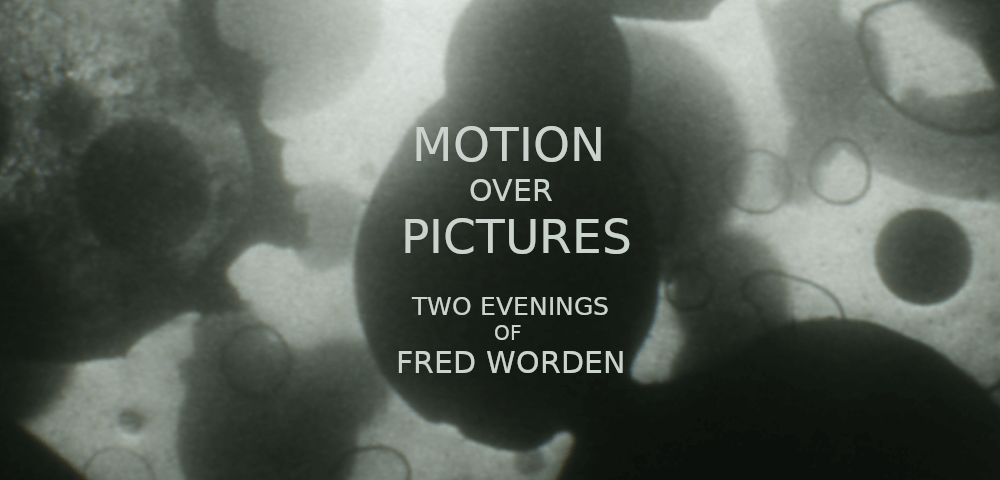
“When it comes to motion pictures, I’ve always been a lot more interested in the motion than the pictures. Images, in fact, have always been for me primarily a medium through which motion (or energy) can manifest.” —Fred Worden
The four decades of work that comprise avant-gardist Fred Worden’s cinematic explorations are a constantly evolving set of collisions (and collusions) involving images and abstractions that range from satirical jabs at the self-seriousness of experimental film culture, sincere tributes and contemplations of the medium, or pure jolts of pulsating visual energy—but most often, all of the above. Throughout his artistic life and career as a professor, Worden has found himself at the epicenter of creative communities on the west coast (where he graduated from CalArts and made early collaborations with Chris Langdon), the east coast (evidenced in his longtime friendships with the likes of Ken Jacobs and Ernie Gehr), and in between (as a member of the Criss-Cross artists group from Boulder). Despite the acclaim of his peers and past showcases of his work at some of our city’s most prestigious venues in past decades (including, MoMA, New York Film Festival, and the Whitney Biennial), Worden’s work has endured a protracted period of neglect from exhibition at a time where appreciation for experimental film has reached a recent zenith.
In the hopes of introducing Worden’s incomparable contributions to a new generation of New York-based nervous systems, Spectacle is honored to present a career-spanning retrospective across two nights thanks to the generous support of guest co-programmer Paul Attard, archivist Mark Toscano, Fred Worden, and his family.
Programs 1 and 2 on Friday, December 6th, will be projected almost entirely on 16mm prints, while Programs 3 and 4 on Saturday, December 7th, encompass Worden’s uniquely humorous and perception-scrambling forays into the frontiers of digital video.
Mark Toscano will be present at each screening to provide extended introductions to the programs.
Co-programming and program introductions written by Paul Attard. Special thanks to Mark Toscano, Fred Worden, and Monique Ernst.
Additional thanks to Audrey Johnson, Mark Maloney, Brett Kashmere and Seth Mitter (Canyon Cinema), Robert Schneider (The Film-makers’ Cooperative), Kathy Del Beccaro, Sebastian Becerra, and Paul Crucero
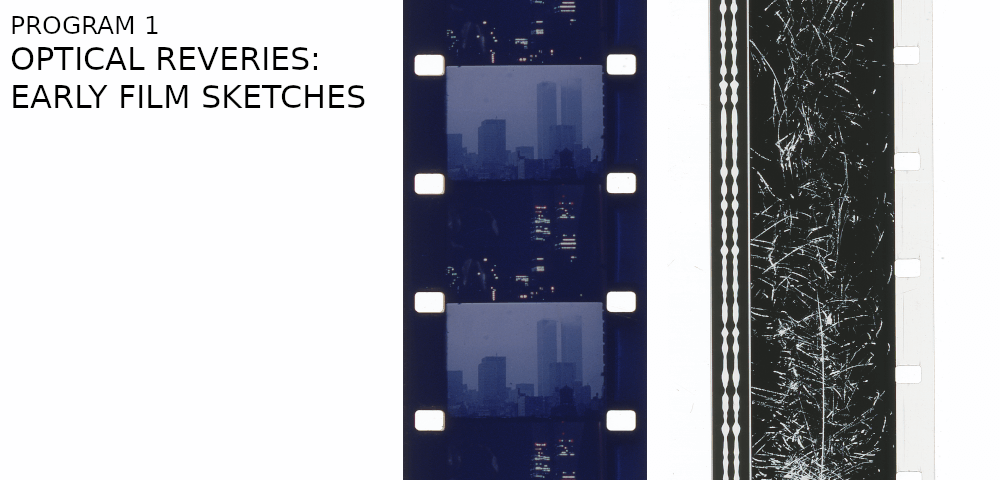
STROBE WARNING. Most of the films in this program contain intense flicker effects unsafe for those sensitive to light.
PROGRAM 1
OPTICAL REVERIES: EARLY FILM SKETCHES
FRIDAY, DECEMBER 6 – 7:30PM
SPECIAL EVENT TICKETS
Comprised of some of Worden’s earliest cinematic experiments, this program brings together a selection of titles that film preservationist Mark Toscano once described as “sketches”—works that are short, sweet, to the point, and entirely unconcerned with making any “big” statement. Mostly formal and silent in nature, these films are far from clinical; Worden’s trademark wit remains ever-present. Whether addressing the audience directly in VENUSVILLE, zooming through space in IN & OUT, scratching directly onto celluloid in BOULEVARD, or reveling in the primordial power of light in THROBS, these titles fully embrace what could be described as “termite art.”
VENUSVILLE
Dir. Fred Worden, Chris Langdon, 1973
United States. 10 min.
“The two filmmakers had a bet: how easily can you tell the difference between a moving image of a still object, and a freeze frame of the same? Pretty easily. No montage, no human subjects, minimal visual content, and the artists basically pissing on the fourth wall by calling attention in every way possible to the artifice of what they’re doing. An anti-film school film made at film school.” —Mark Toscano
FOUR FRAMES
Dir. Fred Worden
1976. United States.
10 min. 16mm.
Silent.
“Color/form, light/shadow, flatness/depth, figuration/abstraction, landscape/paint, all collaging and colliding in an exploratory, arrhythmic, kinetic dance constructed a frame at a time by Fred Worden on his optical printer. This early film now reveals itself as a revelatory early warning sign of Worden’s filmmaking to come, comprising ten minutes extrapolated from only four frames of source imagery.” —Mark Toscano
BON AMI
1977. United States.
7 min. 16mm.
Silent.
“This little-seen abstract work of Worden’s began with short expressionistic/biomorphic color sequences he generated from scratched and abraded film strips made via a liberal application of the titular cleaning agent. These passages were then spun into an elusive, experiential coherence via Fred’s analytic and poetic optical printing, resulting in an evolving cascade of loops and rhythms.” —Mark Toscano
HERE, THERE, NOW, LATER
1983. United States.
3 min. 16mm.
Silent.
“An almost offhand drive through a mountain tunnel is optically recomposed by Worden to create perceptual collisions between dark and light, presence and absence. The delineated curve of the roadway maintains its spatial integrity, a visual axis for Worden’s flickering temporal reorganizations.” —Mark Toscano
IN & OUT
1983. United States.
3 min. 16mm.
Silent.
“Employing a view of the World Trade Center shot at a seemingly casual angle from an apartment window, Worden employs single frame optical printing to rapidly alternate between different times of day/night, as well as apartment lights on/off, exploding and collapsing these opposing interior and exterior spaces.” —Mark Toscano
PLOTTING THE GREY SCALE: 2 OR 3 QUICK TRAVERSES
1985. United States.
7 min. 16mm.
Silent.
“A monochromatic field study of sorts, along perpendicular axes. Varying shades of grey flicker in increasing intensity, giving way to a kinetic study of activated organic forms deriving from rapidly changing optically printed freeze frames of trees. A variation on the grey flicker recurs, climaxing in a modestly manipulated study of leaves moving in the wind. Overall, this unusual and visually affecting film brings together some of Worden’s most elemental interests, including stasis, motion, rhythm, visual consonance and dissonance, and the tension between the pictorial and the abstract, all with a characteristic phenomenological undercurrent.” —Mark Toscano
LURE
1986. United States.
5 min. 16mm. Silent.
“An accident on a frozen lake. A story spread across a visual matrix in parallel with the spread across the breaking ice of the hero/victim. Gambling and luxuriating on nature’s thin ice mandates a payback, no? Welcome to that sinking feeling.” —Fred Worden
BOULEVARD
1989. United States.
9 min. 16mm.
“Conceived as a homage and an answer to Len Lye’s hand-processed FREE RADICALS. Lye’s film consists of direct, non-photographic markings on the emulsion, accompanied by a soundtrack of African percussion (surely exotic for the time). Lye’s choice, after a long career in both commercial and experimental cinema, to turn to such bare and primitive material (“aboriginal” was his chosen term) fits with my own obsession with sticking as closely as possible to the primary elements of the film in order to invoke the underlying and real power of cinema.” —Fred Worden
THROBS
1972. United States.
7 min. 16mm.
“Fred Worden’s magical CalArts thesis film collages all manner of spectacle (car crashes, football, circus, television) into a hypnotic and dream-like reverie that feels somehow personal, as if a revisited catalog of images that might once have given him delight in his youth. The eclectic source material, woven together with genuine and unexpected beauty on the optical printer, moves from refrain to refrain with a fluidity that suggests a free-associating cinematic consciousness, a momentary pause in the now on the then.” —Mark Toscano
“My 1973 CalArts MFA film. A first stab at orchestrating the flow of images on a purely kinetic/musical basis. A product of the then wondrous seeming optical printer housed in the bowels of the CalArts Film School. My first ride on that big machine.” —Fred Worden
Approximate running time (with intro and a reel change break): 86 min.
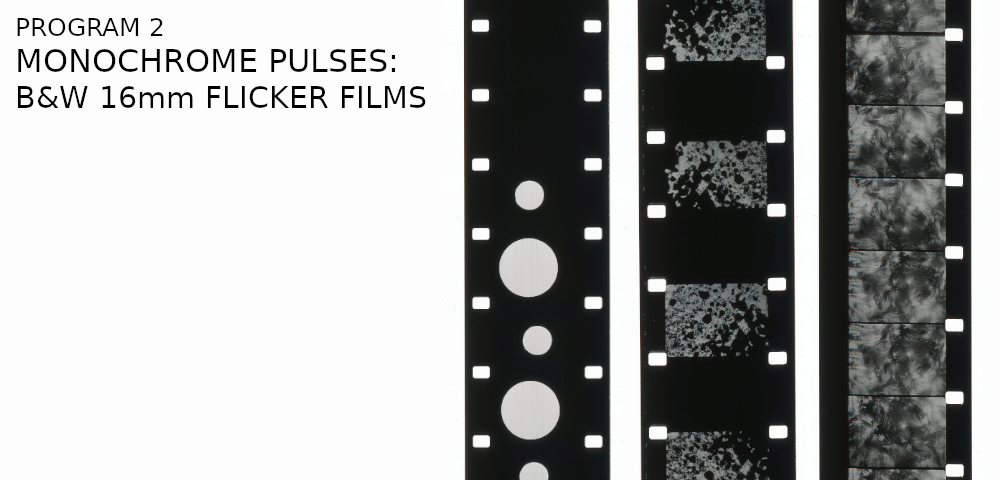
STROBE WARNING. Most of the films in this program contain intense flicker effects unsafe for those sensitive to light.
PROGRAM 2
MONOCHROME PULSES: 16mm B&W FLICKER FILMS
FRIDAY, DECEMBER 6 – 10PM
SPECIAL EVENT TICKETS
“Not enough is said about darkness. Much of what I do stars darkness. Couldn’t do it without a yielding embracing darkness. Talk to Fred Worden about bringing forward the hidden intervals of darkness during projection. Give it a role, as in my Nervous works, as in Fred’s, Tony Conrad, Victor Grauer, Peter Kubelka, and entwined with hits of light we see things never seen before.” —Ken Jacobs
Described by Worden himself as “Optical Crack for the mind and body” (and “dangerously non-addictive”—though I would disagree with that statement), these “flicker films” are some of the most visceral and vibrant works in his oeuvre. Starting with INSOMNIA, a warm-up of sorts before plunging headfirst into the primordial abyss, and continuing with a suite of titles that will have you questioning the very faculties of your eyesight (AUTOMATIC WRITING 2, THE OR CLOUD, and IF ONLY), this is a night for only the most hardcore experimental film junkies looking for a good hit. Capping things off is ONE, which Ken Jacobs selected as the best film of the 1990s: “Fred Worden’s ONE is the breakthrough film of the decade for me in terms of passage to undreamt-of cine-phenomena/esthetic experience. Loosens the brains good.” Trust me when I say that after this screening, your noggin will feel like an over-stretched glob of Silly Putty.
INSOMNIA
Dir. Fred Worden, 1983
United States. 5 min. 16mm
Silent.
“INSOMNIA is the most minimal and self-referential of Worden’s films. It consists entirely of punched holes in black leader. The fractal reference is secured spatially by using punches of two different sizes, and temporally by the distribution of the punches along the strip of leader. In some ways this is Worden’s purest pattern film. We are presented only with a pattern of black and white. There is no imagery to compete for our attention. But somehow we see the film as representational. The white struggles against the black in an attempt to pour into the foreground. It is as if the ancient cosmology were true: The stars are holes in the canopy that shrouds the earth. We yearn to leave the world of darkness and appearance for the world of reality and light on the other side.” —Dale Jamieson
AUTOMATIC WRITING 2
2000. United States.
11 min. 16mm.
Silent.
“Continued explorations of automatism as a practical guide to negotiating the mysterious zone where light and no-light flutter in a fecund equipoise. A homemade rocket to realms unknown to any movie camera or photo lens. In the end, perhaps nothing more than a search for an experience of continuity, a kind of sanity. Failing sanity, a wild ride at least.” —Fred Worden
THE OR CLOUD
2001. United States.
7 min. 16mm.
Silent.
“A guided adventure for the eyeballs. And as such, also, of necessity, an adventure of the mind (how could it be otherwise?). I believe there is a current which runs at the core of all beings, call it the life force, a dynamic which in individuals reflects both the personal and the universal. Up on the screen, frames in motion, a rushing stream of articulated energy to resonate with that inner biological current. Adventurous eyeballing then, in the ideal, an epiphanous moment of mutual recognition and commiseration between energy forms. ‘There is a vibration which exists to enrapture and console us.’ (Rilke). I like to think this vibration can be detected streaming out THE OR CLOUD.” —Fred Worden
IF ONLY
2003. United States.
8 min. 16mm.
Silent.
“The bubble shaped orb of the human head, perched atop its touchy-feely transport system has seven moist openings through which everything outside comes in: two eyes, two nostrils, one mouth and two ears. Inside the bubblehead, bubble universes spawn ad infinitum and the only passable direction is directly into the steady headwinds of an ever-advancing infinity of veils. A high wire bobbing and weaving just to stay upright. These artful if endless veil penetrations are at once the human job description as well as nature’s shot at vindicating the transient in the face of the impassive infinite. Nature makes the orifices moist so things can stick, at least momentarily. And so the intoxicated camera operator shoots the moon slipping through the barren trees. The rabbit hole’s light shadow appears and he obliges, head first, no looking back. His cranium (like yours) is packed with illusions, but down the rabbit hole they treasure the same just so long as they’re custom fabricated, hand tooled and conscious. Down this hole, stalking the unforeseen non-translatable is all. Join in here.” —Fred Worden
ONE
1998. United States.
23 min. 16mm.
Silent.
“In contrast to superficial works that have made abstraction a purely decorative affair, Fred Worden has made a phenomenal film. Pushing the language of cinematic abstraction towards new horizons, seizing new possibilities and our cervical perception. ONE catalyzes a whirlwind of unexpected images whose origin seems to be the screen or the activity and the gaze of the spectator.” —Mark McElhatten
Approximate running time (with intro and reel change break): 80 min.
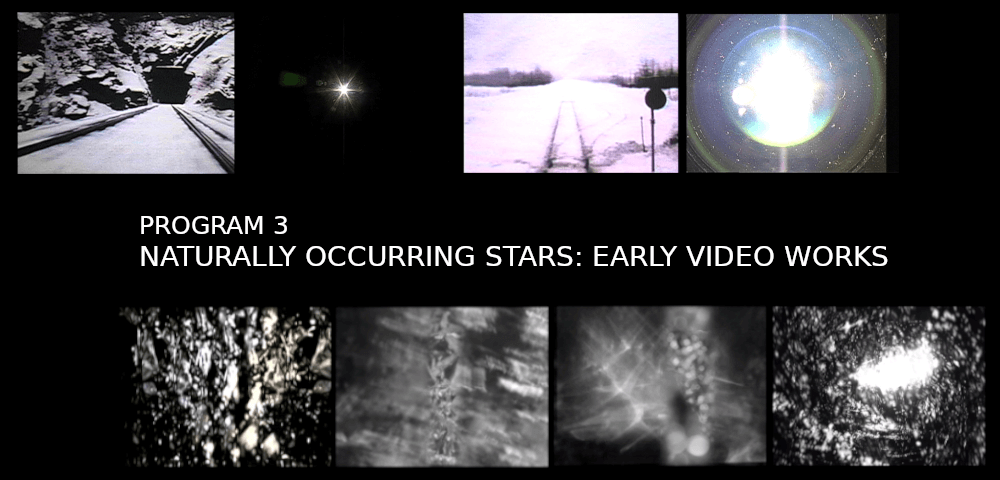
STROBE WARNING. Most of the films in this program contain intense flicker effects unsafe for those sensitive to light.
PROGRAM 3
NATURALLY OCCURRING STARS: EARLY VIDEO WORKS
SATURDAY, DECEMBER 7 – 5PM
SPECIAL EVENT TICKETS
Like many other moving-image artists of his generation at the turn of the millennium—including the aforementioned Ken Jacobs, Ernie Gehr, and Andrew Noren—Worden successfully developed a distinct cinematic language for the digital age. Rather than merely replicating what he had achieved with 16mm film, he embraced the possibilities of the new medium, pushing its technology to the limit with retina-shredding experiments—some explicitly recalling cinema’s silent roots (HERE), others seemingly designed to induce splitting headaches (EVERYDAY BAD DREAM)—that are as forward-thinking as they are incendiary. In particular, BLUE POLE(S), the program’s closer, blazes with the intensity of a constellation of twinkling stars.
AMONGST THE PERSUADED
Dir. Fred Worden, 2004.
United States. 23 min.
“The human susceptibility to delusional thinking has, at least, this defining characteristic: easy to spot in others, hard to see in oneself. The filmmaker, racked by the inescapable observation that it is delusional thinking that is the common denominator driver of so many contemporary man-made disasters gins up a vehicle meant to ruthlessly uncover and expose his own particular brand of pathological believing. This film is about us. I believe it’s true. See the iron jaws of the mechanism at work as the filmmaker falls into the biggest and most obvious delusion of all: the belief that he can master his own delusions by making a film about them.” —Fred Worden
HERE
2005. United States.
10 min.
“HERE is a place, an optical location brought into being through conjuring in order to accommodate a clandestine rendezvous between Sir Laurence Olivier and Georges Méliès. Early cinema audiences, we are told, were mesmerized by the cinematic apparitions and impossible cavortings realized by the sly Melies. Those first paying customers had, apparently, no need for plots, movie stars or sharp ideas. Direct conjuring was more than enough. Could that work HERE?” —Fred Worden
EVERYDAY BAD DREAM
2006. United States.
6 min.
“What at one minute would be unfathomable and at sixty minutes a strident provocation, is at six minutes still gnomic yet rich and involving. […] The motion and the sound indicates an odd territory where even mundane amusement has hit a dead end. Like discarded wrappers left behind when the treats have melted. As with a migraine or bad acid, we are at the mercy of our receptors picking up static or worse. A bad signal to noise ratio in the perceptual field. […] On any given day this is a place always too conveniently located nearby, meant to be sidestepped. A sandtrap. A glitch. The convex depression of a failed epiphany given amplitude. Has anyone ever tried to represent this before in its proper proportion and to the betterment of an art?” —Mark McElhatten
BLUE POLE(S)
2005. United States.
20 min.
“Worden finds a digital outlet for the research into visual phenomena pursued in his films, creating one of the most startling abstract works of recent years. Video signal as constellation of light, piercing a cosmos of noetic possibilities. Its soundtrack is the equally mesmerizing “London Fix” by Tom Hamilton, an electronic composition based on the fluctuating price of gold. This strange brew is visual voodoo of the highest order.” —Mark Webber
Approximate running time (with intro): 88 min.
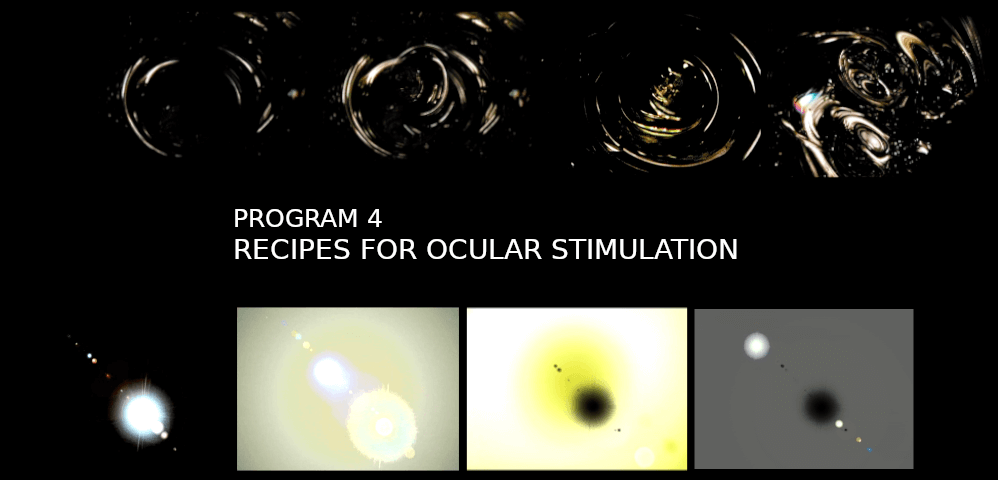
STROBE WARNING. Most of the films in this program contain intense flicker effects unsafe for those sensitive to light.
PROGRAM 4
RECIPES FOR OCULAR STIMULATION
SATURDAY, DECEMBER 7 – 7:30PM
SPECIAL EVENT TICKETS
Step right up, folks, and behold the wild, mind-bending world of Fred Worden and his hallucinatory digital works! In TIME’S ARROW, faces zip past on a freeway to nowhere, lost in the flow of time and space. Then, brace yourselves for WHEN WORLDS COLLUDE, where images break free from reality, before taking a trip with 1859, built on a lens flare so psychedelic you’d swear it’s illegal—except it ain’t! Finally, ALL MY LIFE brings the storm (literally), blending time, memory, and cinema into a piece that is equal parts nostalgic and neurotic.
NORTH SHORE
Dir. Fred Worden, 2007.
United States. 11 min.
“Worden’s latest might be a sort of semi-homage to Ken Jacobs, since it uses many of the techniques (strobing, left / right oscillation, rotating forms) that characterize the Nervous System, particularly in its video incarnation. But Worden has been working for years now at exploring the tension between surface and depth in the abstract image, the cognitive zone where the push and pull of masses and voids across the screen prompts discrete phenomena to coagulate into an all-over activation of the picture plane. NORTH SHORE takes this approach in a bizarre new direction, since (as was the case with Worden’s last Views entry, EVERYDAY BAD DREAM) it is nearly impossible to discern just what one is looking at until the very last. (And even then, I’m not 100% sure.)” —Michael Sicinski
TIME’S ARROW
2007. United States.
11 min.
“Out on my freeway, directionality is elusive. The faces in the windows appear and then disappear, some moving out ahead, some falling behind, some moving so fast as to be beyond registering, others sliding by so languidly you’d think they want something from you. What’s irreversible is the plain fact that once they disappear from view, they’re gone forever. No amount of freeway jostling is ever likely to bring them by again. Each time I think to myself: one more person I’ll never know.” —Fred Worden
WHEN WORLDS COLLUDE
2008. United States.
14 min.
“An experimental film structured as a kind of specialized playground in which highly representational images are freed from their duties to refer to things outside of themselves. The images run free in their new lightness making unforeseeable, promiscuous connections with each other and developing an inexplicable, non-parsable plot line that runs along with all the urgency of any good thriller. When worlds collude, something outside of description is always just about to happen.” —Fred Worden
1859
2009. United States.
11 min.
“Built out of a 30-frame clip of a lens flare. LSD is illegal, 1859 is not.” —Fred Worden
ALL MY LIFE
2009. United States.
19 min.
“A dramatic weather front led to images that in turn invoked memories of Bruce Baillie’s 1966 film of the same name. The passage of time would seem to be the common theme that both films share.” —Fred Worden
Approximate running time (with intro): 86 min.
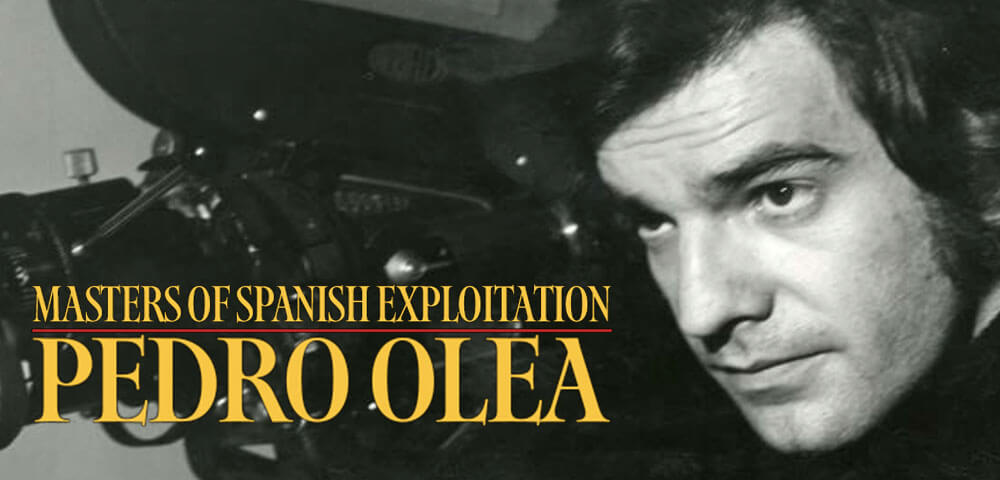

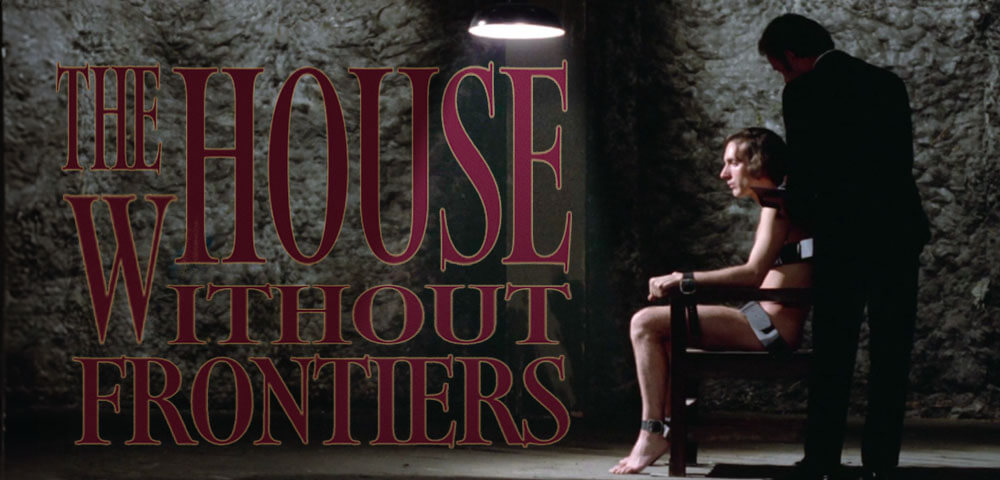
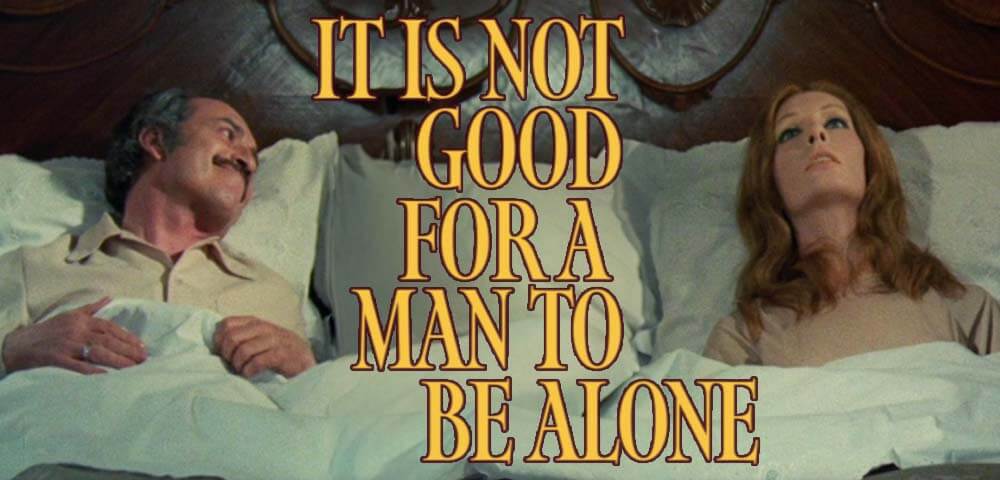

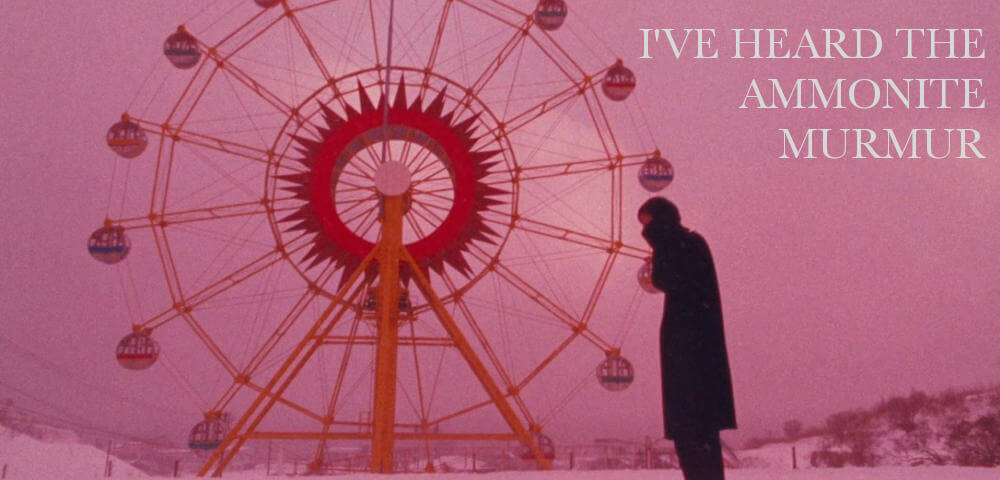





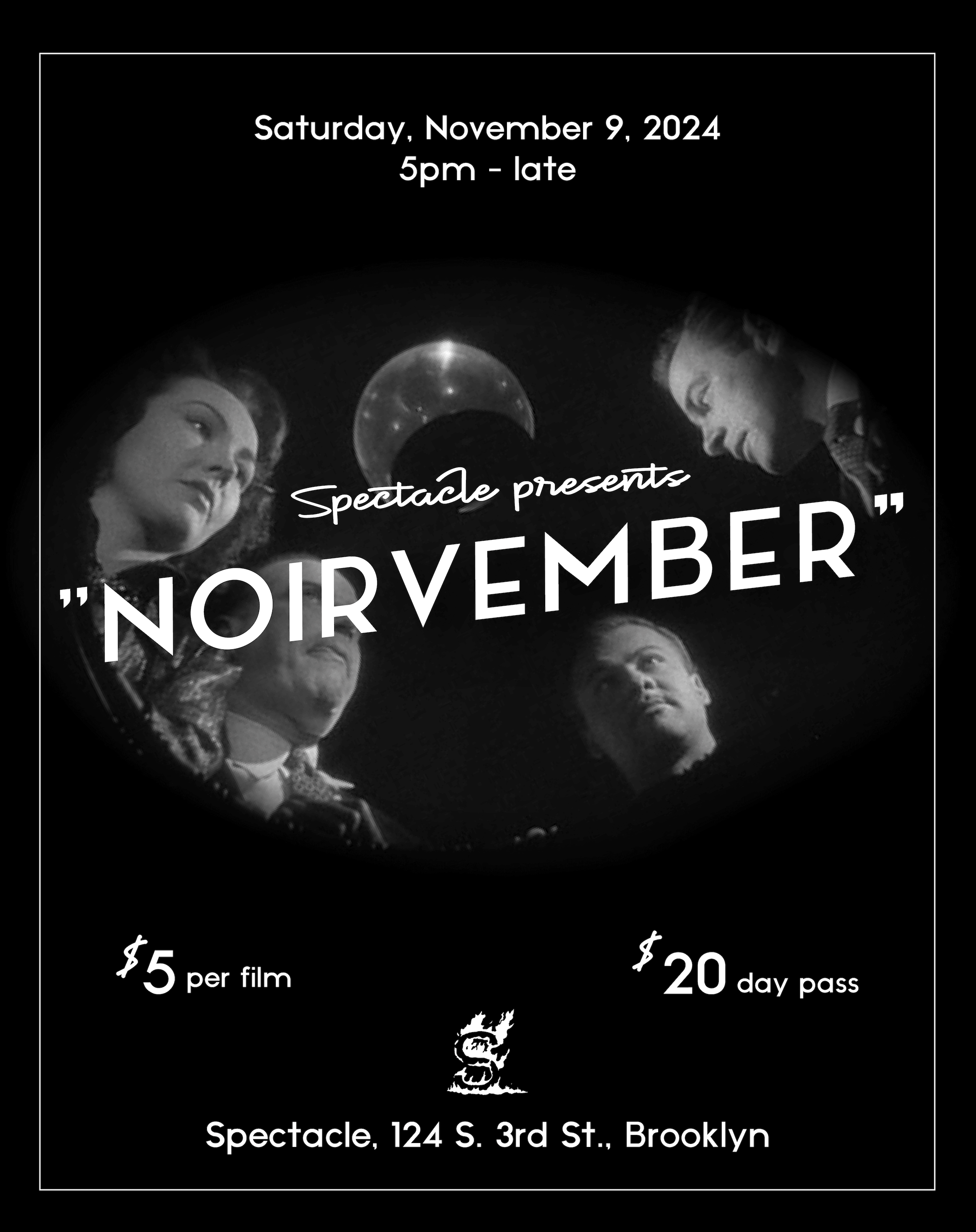 Happy Noirvember to all who still celebrate! This year’s program dives deep into the genre’s most patented themes that are set against some of its most surrealist of backdrops. In true Noirvember tradition, we’re shining a spotlight on the overlooked gems of yesteryear, presenting familiar faces in unexpected roles—both in front of and behind the camera—and honoring the b-films that have (mostly) faded into obscurity.
Happy Noirvember to all who still celebrate! This year’s program dives deep into the genre’s most patented themes that are set against some of its most surrealist of backdrops. In true Noirvember tradition, we’re shining a spotlight on the overlooked gems of yesteryear, presenting familiar faces in unexpected roles—both in front of and behind the camera—and honoring the b-films that have (mostly) faded into obscurity.